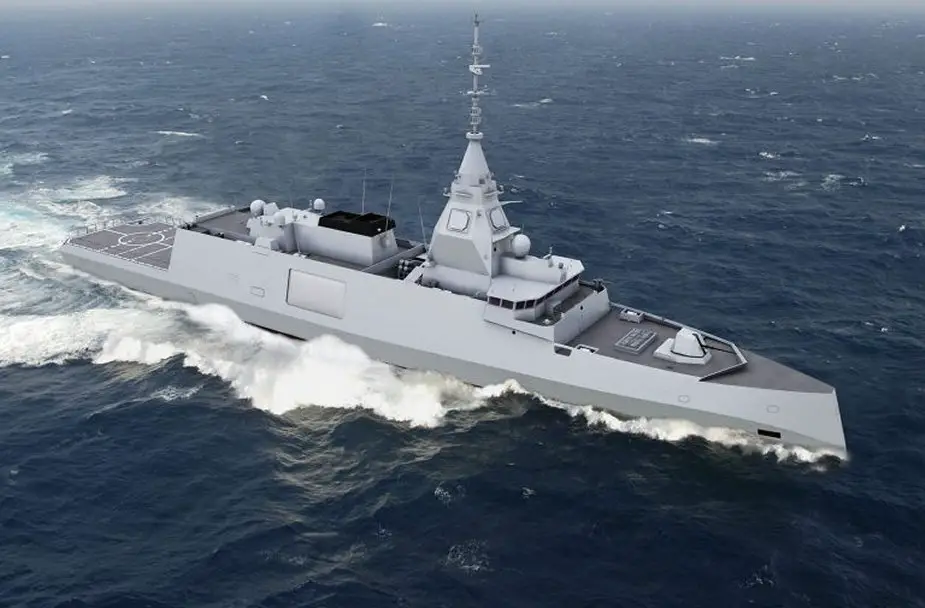Breaking news
Steel-cutting ceremony to be hold for new frigate of Naval Group.
Naval Group is set to begin construction on the Defense and Intervention Frigate (FDI) with a first steel cutting ceremony expected to take place on Thursday, October 24 at the shipyard in Lorient. The FDI is the next generation of surface combatant for the French Navy.
 Intermediate-size frigates (FTIs) intended for the French Navy (Picture source: Naval Group)
Intermediate-size frigates (FTIs) intended for the French Navy (Picture source: Naval Group)
Initiated in 2013 and notified in 2017, the FDI program replaces the French multi-mission frigates (FREMM) 9 to 11, finally abandoned, and will at the same time replace the five units of the Lafayette type (FLF) with vessels well more powerful. It is also a state effort to allow Naval Group to develop a new generation frigate equipped with the latest technological advances (fully digitized platform and natively designed to deal with cyber threats in particular). But also to offer the French manufacturer a new product on the export market, to complete its range with a frigate of a size of about 4000 tons, located between the corvettes of the family Gowind (2500 tons) and the FREMM (6000 tons).
The delivery to the French Navy of the first FDI (whose baptismal name is expected to be revealed on Thursday) is scheduled for late 2023 for admission to active service in 2025. His four sisterships will then be delivered at the rate of one unit every 18 months.
Called to replace the five FLFs put into service between 1996 and 2001, three of which will be modernized, the new French frigates will measure 121.6 meters long and 17.7 meters wide and 4460 tonnes of displacement.
They will include SeaFire radar plates, KingKlip Mk2 hull sonar and Captas-4 Compact towed sonar. The base armament will consist of 8 Exocet MM40 Block3 anti-ship missiles, 16 Aster 15 and Aster 30 surface-to-air missiles, a 76mm turret, two teleoperated 20mm guns and four MU90 torpedo tubes. A conservatory space for two octuples vertical launchers on the front beach will allow to add 16 Aster and / or naval cruise missiles.
The frigates could be used for the projection of special forces, their two lateral niches being dimensioned to be able to accommodate each an ECUME, boat of the marine commandos.
Their aeronautical facilities are designed to accommodate and support simultaneously an SDAM aerial drone (VSR 700) and a Cayman Marine (NH90). These new machines will succeed Alouette III, Dauphin and Panther. At this stage, the Cheetah Marine is not planned for the ASM missions but will constitute a significant contribution in the field of antisurface control since it must implement the future ANL / Sea Venom Franco-British, with a carrying capacity of two of these light anti-ship missiles.




























